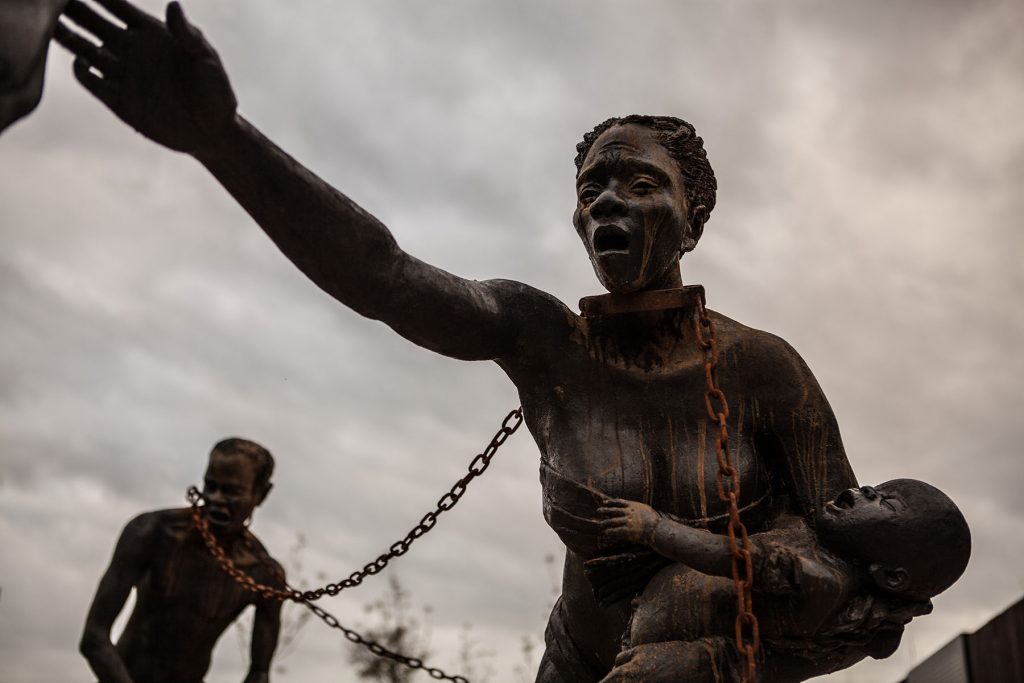PHOENIX — More than 4,000 African-Americans were lynched during the “lynching era,” after the end of Reconstruction in 1877 and before 1950.
Eighty-eight percent of the lynchings occurred across 10 Southern states, according to “Lynching in America,” a 2017 report by the Equal Justice Initiative, a legal advocacy group out of Montgomery, Alabama.
The lynching era’s legacy can still be seen today, historians and politicians say. Three black senators introduced legislation this week to make lynchings a federal crime, saying it is long past due.
Stewart Tolnay, a sociology professor at University of Washington, said states with the most lynchings now have higher homicide rates, increased imprisonments, more church burnings and a greater number of death penalty sentences.
“Data shows that lynchings created the underlying social conditions that create hate and racism today,” Tolnay said.
During the lynching era, E.M. Beck, a sociology professor at University of Georgia, said anger from the Civil War, competition for jobs and a rise of African-Americans as public figures led to increased violence against African-Americans.
“There was a rise in white supremacy to the point where whites did not view blacks as human, and also a generalized, widespread understanding that mob violence was necessary because of recent history,” Beck said.
African-American men were lynched for standing up against oppression, speaking to white women and committing minor social transgressions, according to the Lynching in America report. Of the lynchings recorded, a total of 25 percent of the people who were lynched were accused of sexually assaulting a white woman and 30 percent were accused of murder.

Lynchings became public spectacles, as hundreds and even thousands of people would gather to watch, Beck and Tolnay both said. Local newspapers would advertise the events, and food and drink carts would be present as African-American men would be tortured for hours before finally being lynched.
“There was actually no anti-lynching legislation in place federally,” Tolnay said. “So the federal government, which was against lynchings for the most part, could not step in to stop them.”
Many anti-lynching bills were proposed in the early 20th century, including the Dyer Anti-Lynching Bill of 1918, which passed through the U.S. House of Representatives, but was halted by a series of filibusters by Southern senators. The U.S. government did not apologize for the lack of anti-lynching legislation until 2005, but senators are currently pushing for an anti-lynching bill.
U.S. Senators Tim Scott (R-S.C.), Kamala Harris (D-Calif.) and Cory Booker (D-N.J.) rolled out the bill, called the “Justice for Victims of Lynching Act of 2018,” this week.
“Lynching is a dark, despicable part of our history, and we must acknowledge that, lest we repeat it,” Harris said in a press release. “From 1882 to 1986 there have been 200 attempts that have failed to get Congress to pass federal anti-lynching legislation, it’s time for that to change.”
Jim Loewen, author of “Sundown Towns,” a book about American towns that refused to allow African-Americans to live in their communities, said African-Americans migrated to high-populated urban areas after the start of the lynching era.
Detroit and Cleveland, Ohio, saw a 42.5 percent and 36.8 percent increase in African-American population between 1910 and 1970, respectively, according to the lynching report. Jacksonville, Florida, saw a decrease of 28.5 percent.
This caused the competition for jobs to increase between the recently migrated African-Americans and the local white people, Loewen said. This angered some white Northerners, creating racial bias nearly as bad as some areas in the South.
“This wasn’t, and isn’t, just a Southern problem,” Loewen said.
Lynchings made their way to the North after the migration of African-Americans to urban cities, according to the report. A total of 89 lynchings were reported in Indiana, Illinois and Ohio during the lynching era.
Hate crimes against African-Americans are still occurring across the country, but they are most prominent in the Southern states and densely populated urban areas, according to the 2016 FBI hate crime statistics.
The number of reported lynchings decreased in the 1940s, and lynchings that did occur were less public and more private due to a more progressive society, according to the lynching report.
So that lynchings won’t be forgotten, the Equal Justice Initiative opened the National Memorial for Peace and Justice in Montgomery in April. The memorial has signs, sculptures and art from the lynching era.
Bryan Stevenson, director of the Equal Justice Initiative, said the memorial was created to educate people on America’s ugly past.
“Our nation’s history of racial injustice casts a shadow across the American landscape,” Stevenson said. “This shadow cannot be lifted until we shine the light of truth on the destructive violence that shaped our nation, traumatized people of color and compromised our commitment to the rule of law and to equal justice.”

